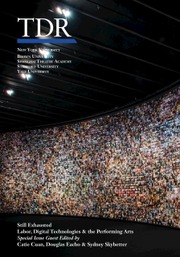
Figure 1. Richard Foreman pondering during a rehearsal break for King Cowboy Rufus Rules the Universe! at St. Mark’s Church, New York City, 2004. (Courtesy of the Hinge Collaborative)
Originals are rare, in the performing arts especially. That’s because performance always re-enacts itself in its dramaturgies, stagings, acting, and writing. Performing is the outcome of rehearsing—re, re, re—again, again, again. In this regard, Richard Foreman was not one of a kind. You can situate him alongside and within expressionism, surrealism, dada, the absurd; even epic theatre. His directorial style is in conversation with auteurs such as Meyerhold, Brecht, Kantor, Brook, Grotowski, Wilson, LeCompte, and Mnouchkine. Foreman’s writing knows Jarry, Ionesco, and Brecht. I could go on, but for all this placing, nothing really fixes Foreman. The closest I know to a true original in theatre.Footnote 1
In 1968 he founded the Ontological-Hysteric Theatre. The name itself says a lot about Foreman. It sounds fancy, academic, obscure, intellectual, difficult. But that opaque name is also a whimsy, an irony, a knowing wink, a telling joke. Anyone who went to one of Foreman’s productions of his own texts remembers his bass monotone voice commenting, parsing, pointing out what we should pay attention to. Foreman the author and director was also Foreman the teacher and critic. He was omnipresent in his work, as Kantor was. He didn’t depart once the production was up and running. He didn’t compose, rehearse, and then set the performance in motion, letting the performers take over. Foreman was immanent throughout. Every move of the actors, every detail of the set—the lighting, the sound, the costumes, the entire world he created—embodied Foreman’s permeating presence. This unique presence saturated his theatre—brilliantly totally effectively in his Wooster Street loft, then in St Mark’s Church on Second Avenue, and over the years at many venues in NYC and far beyond.
But what was this “ontological-hysteric” thing? In an interview with Ken Jordan, Foreman put it this way:
They were normal bourgeois theater, domestic triangle situations. That’s why I called my theater “Ontological-Hysteric,” because the basic syndrome controlling the structure was a classical, boulevard comedy syndrome, which I took to be hysteric in its roots. (in Jordan Reference Jordan1990)
Hold on. “Normal bourgeois theater”? No one attending a Foreman production can say that. So what was it? From my perspective, Foreman staged the inside of his own head. He showed us attending his theatre the world he perceived staring out from that primal space. Or as he put it on his website: “The OHT seeks to produce works that balance a primitive and minimal style with extremely complex and theatrical themes” (Foreman n.d.). “Primitive” as in prime, undividable, original; “minimal” as in the incredibly complex operation of Foreman’s mind.
Foreman not only wrote, designed, directed, and was present in his own plays; he masterfully staged plays by others. Who can forget his 1976 production of Brecht’s Threepenny Opera or his 1996 production of Suzan-Lori Parks’s Venus? Also, Foreman was an active member of the “downtown community” of artists who from the 1950s into the 1970s made SoHo what it was.
In that regard, early in the 1970s, I convened “A Bunch of Experimental Theatres of New York,” an organization for joint funding, tour booking, and management. The Bunch’s managing director was Mercedes Gregory. Among the participating groups were the Ontological-Hysteric Theatre, The Performance Group, André Gregory’s Manhattan Project, Charles Ludlam’s The Ridiculous Theatrical Company, Meredith Monk’s The House, and the feminist collective The Cutting Edge. I was The Bunch’s first president and Foreman succeeded me. We held our meetings in Foreman’s Wooster Street theatre-loft, the home and workspace of Foreman and his long-time partner, the featured performer in many of his plays, Kate Manheim. Without Kate, there would be a very different Richard. She was the object of his attention, the focus of so many of his plays, and truly his muse.
What was he like “personally”? His dark eyes behind thick-lensed glasses gave Foreman the look of a man always examining the world with a microscope—and of a scientist slightly baffled by what he saw. His countenance was serious, even sad. He did not engage in small talk. Although his plays are laced with ironies, I never heard him wisecrack or tell a joke. Maybe he did after I left the room. Our paths crossed: our theatres were both on Wooster Street, we collaborated on The Bunch, but we were not close friends. Still, I will miss him dearly. He is of the cohort I am among. We are cousins, if not brothers. I think I saw more of his productions than he did mine. He was closer to my successors at The Performing Garage, Wooster Group’s Elizabeth LeCompte and Kate Valk.
Foreman staged his Symphony of Rats in 1988 at The Performing Garage where I made so much of my work. More than 30 years later, in 2021, The Wooster Group began working on their version of the play. This was not a restaging of Foreman’s production, but a radically new interpretation. According to Wooster’s website, “When we asked the famous avant-gardist if we could create an entirely new production from his text, he said, ‘You can do whatever you want! I hope it’s completely unrecognizable’” (2025). It was, and that made the production true to the organicity of theatre. How could anyone but Foreman do a Formanesque Foreman? Wooster’s Symphony of Rats opened at The Performing Garage on 27 March 2024. Wooster reprised Symphony commencing on 7 January 2025, three days after Foreman died.


